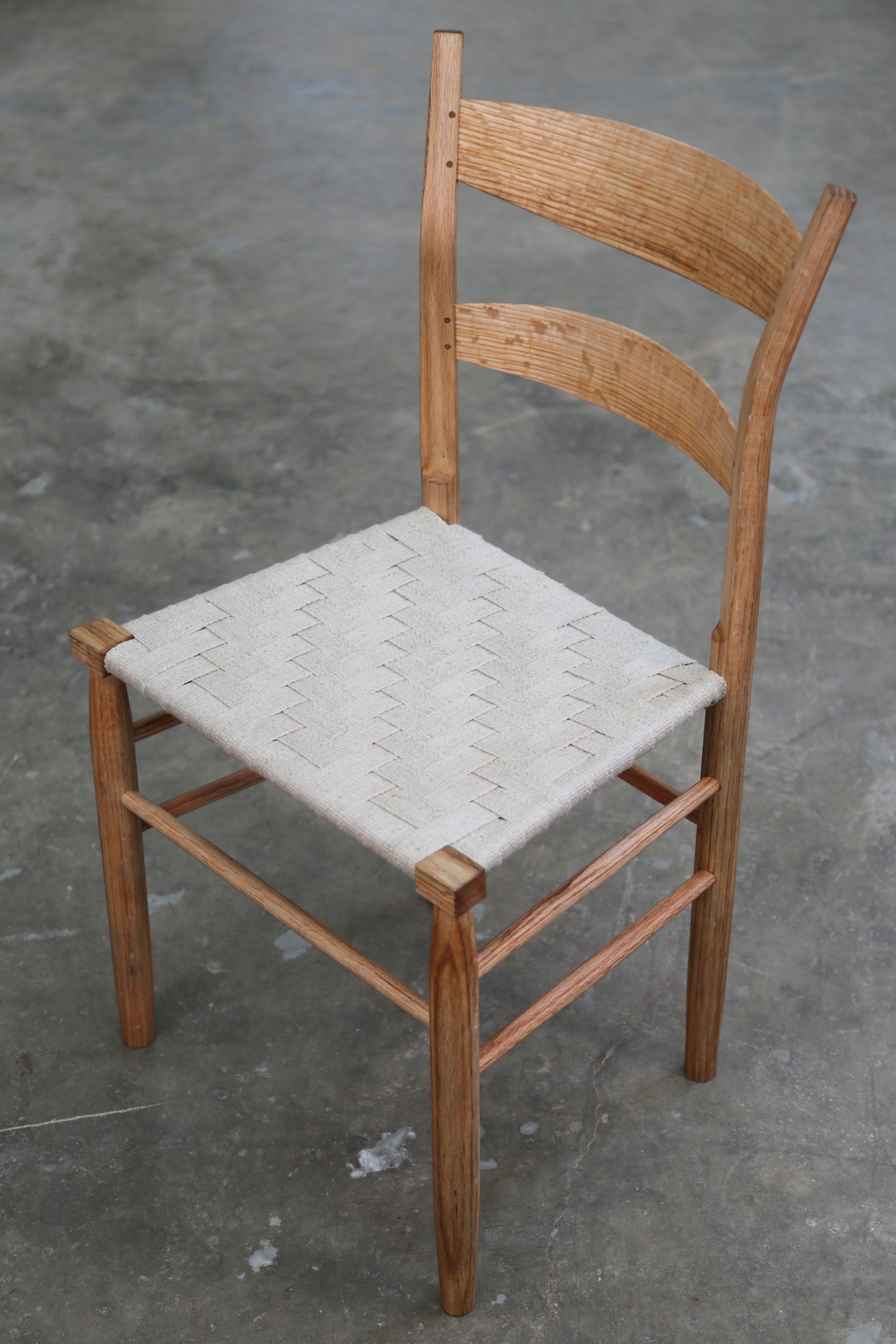
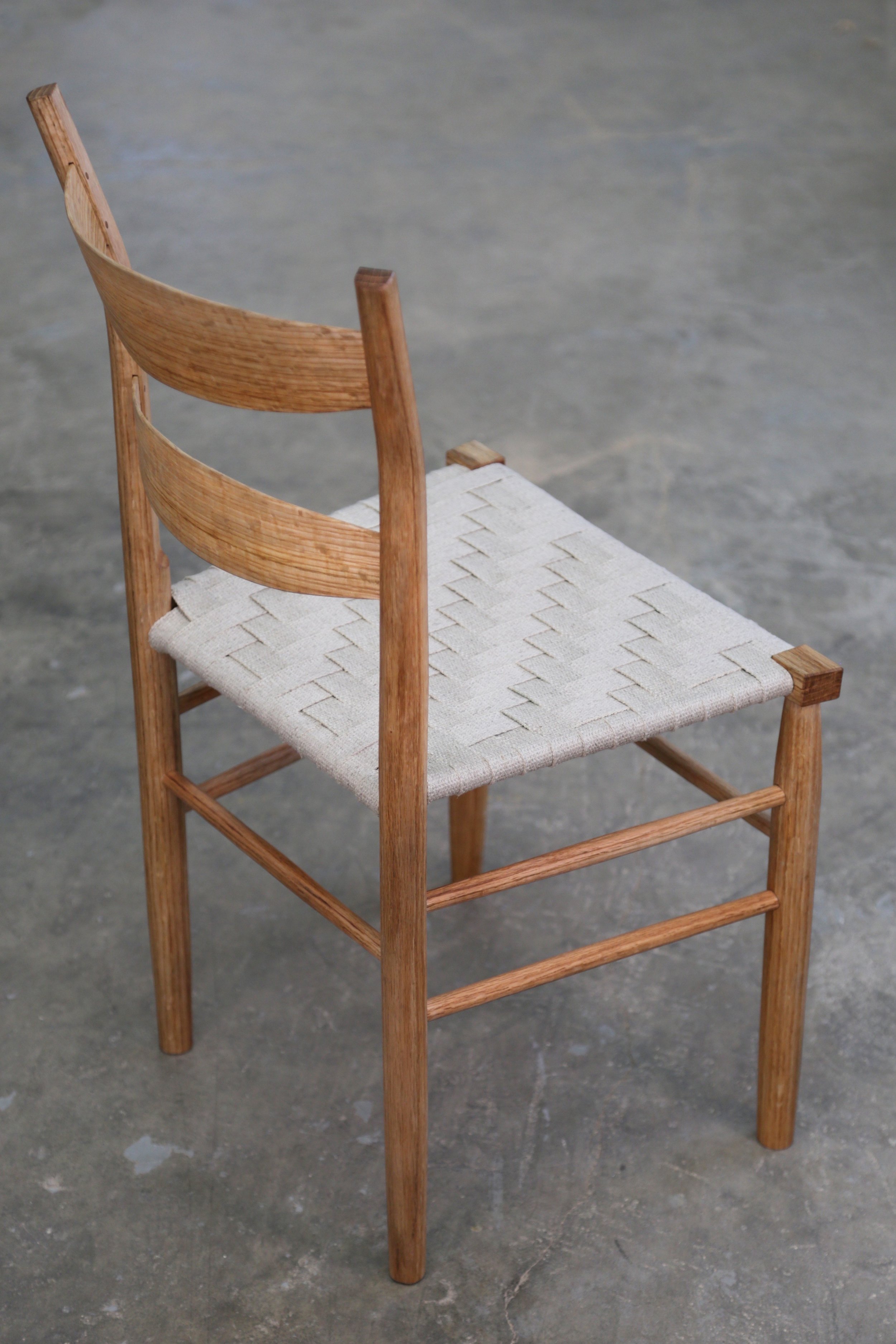
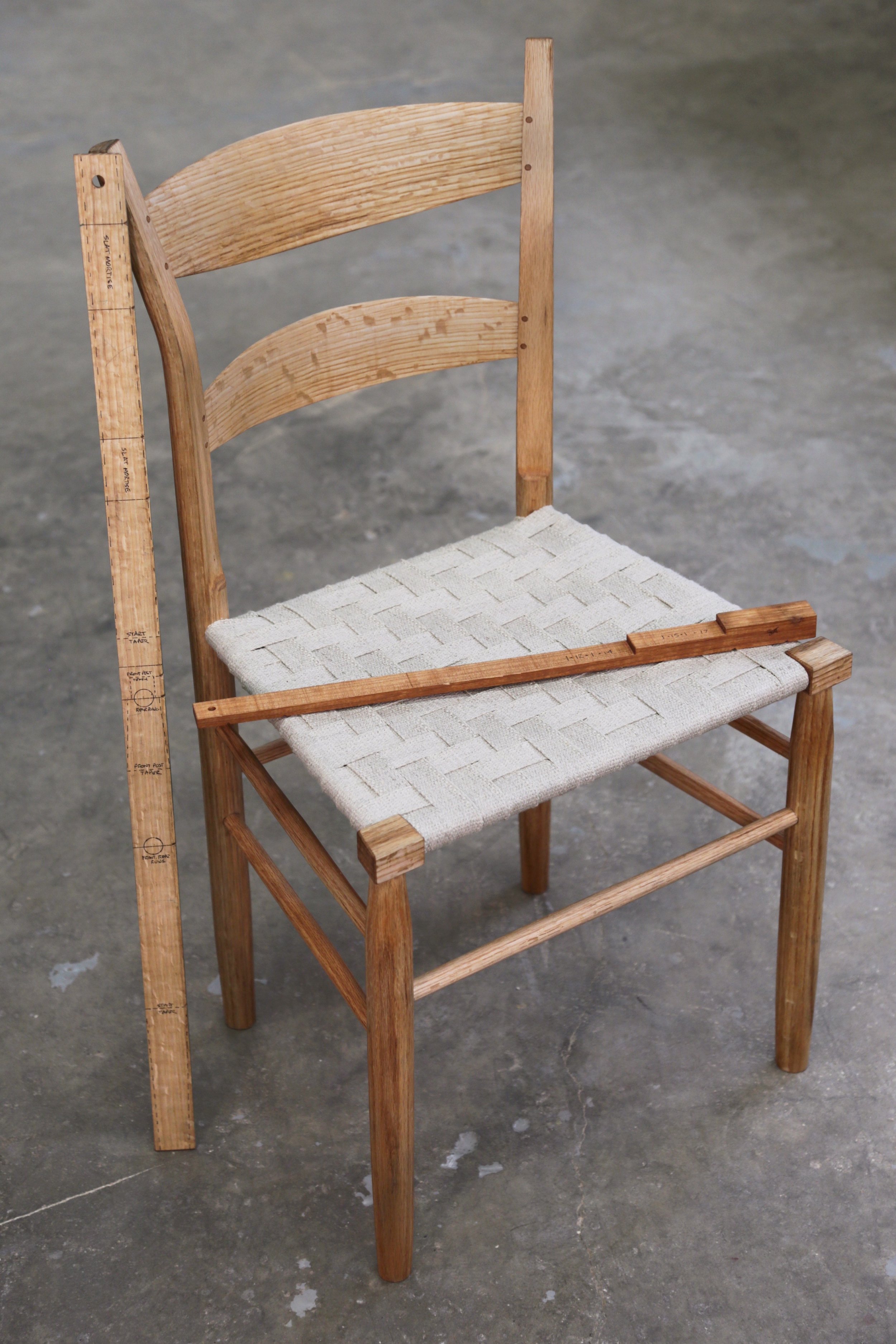
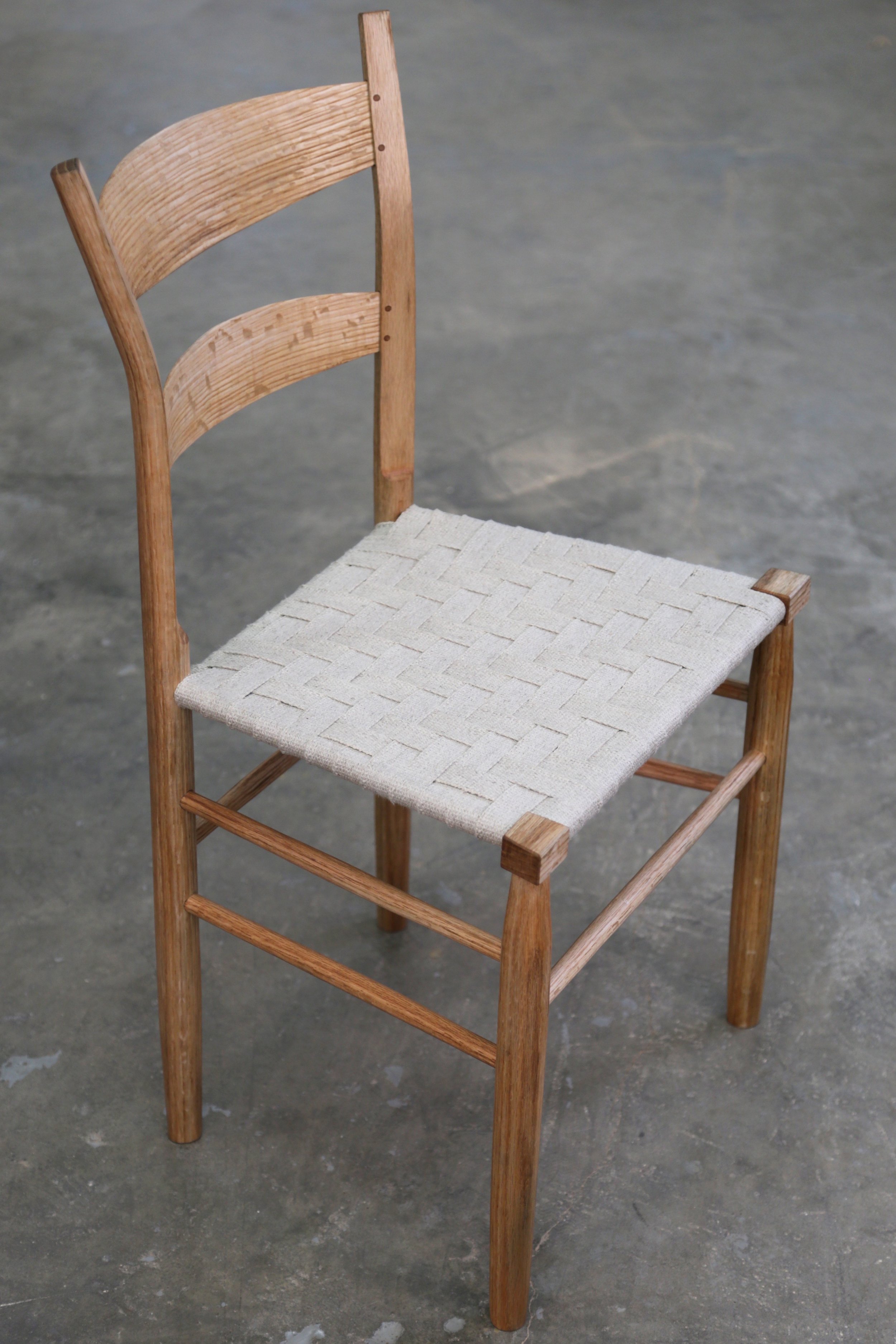
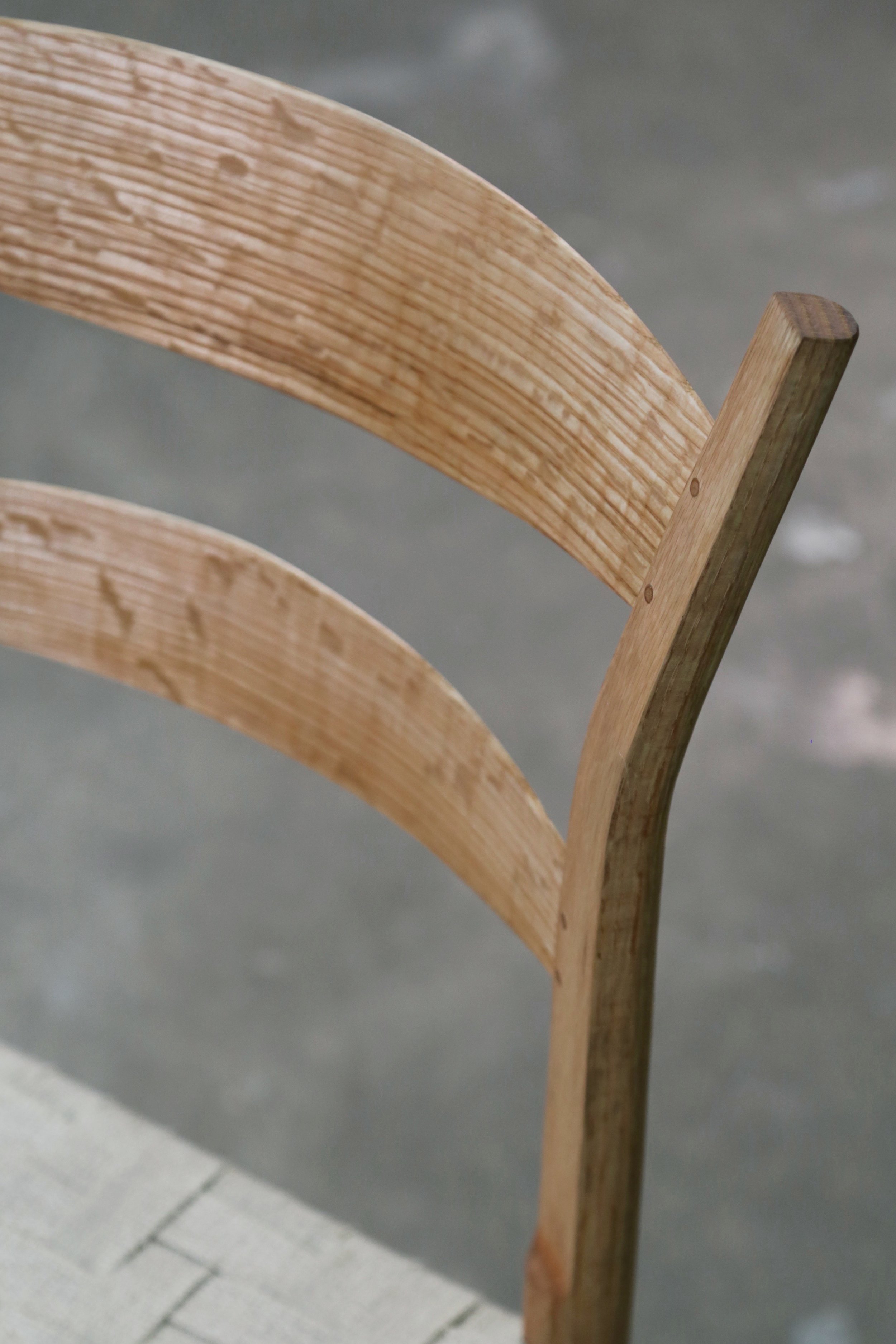

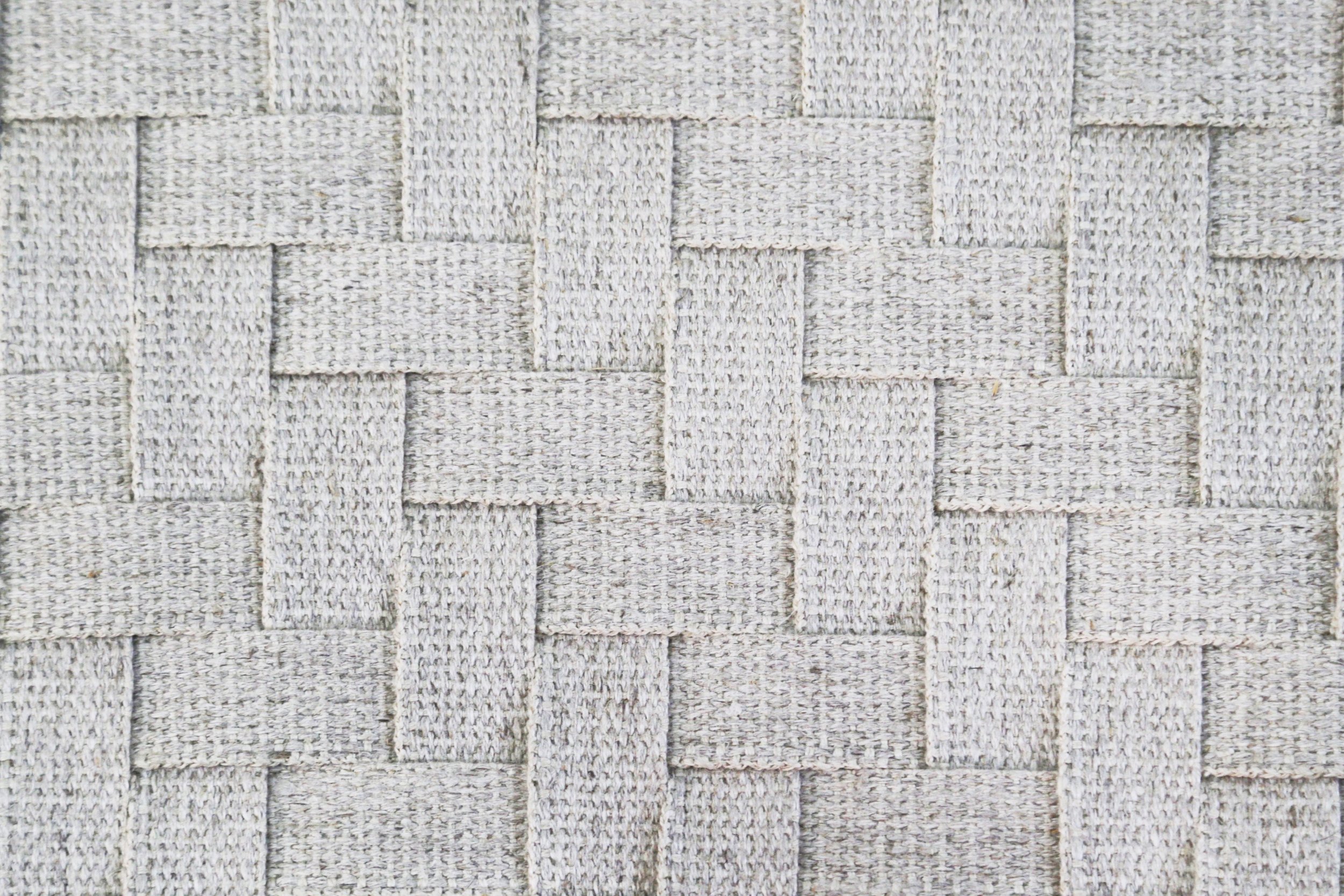
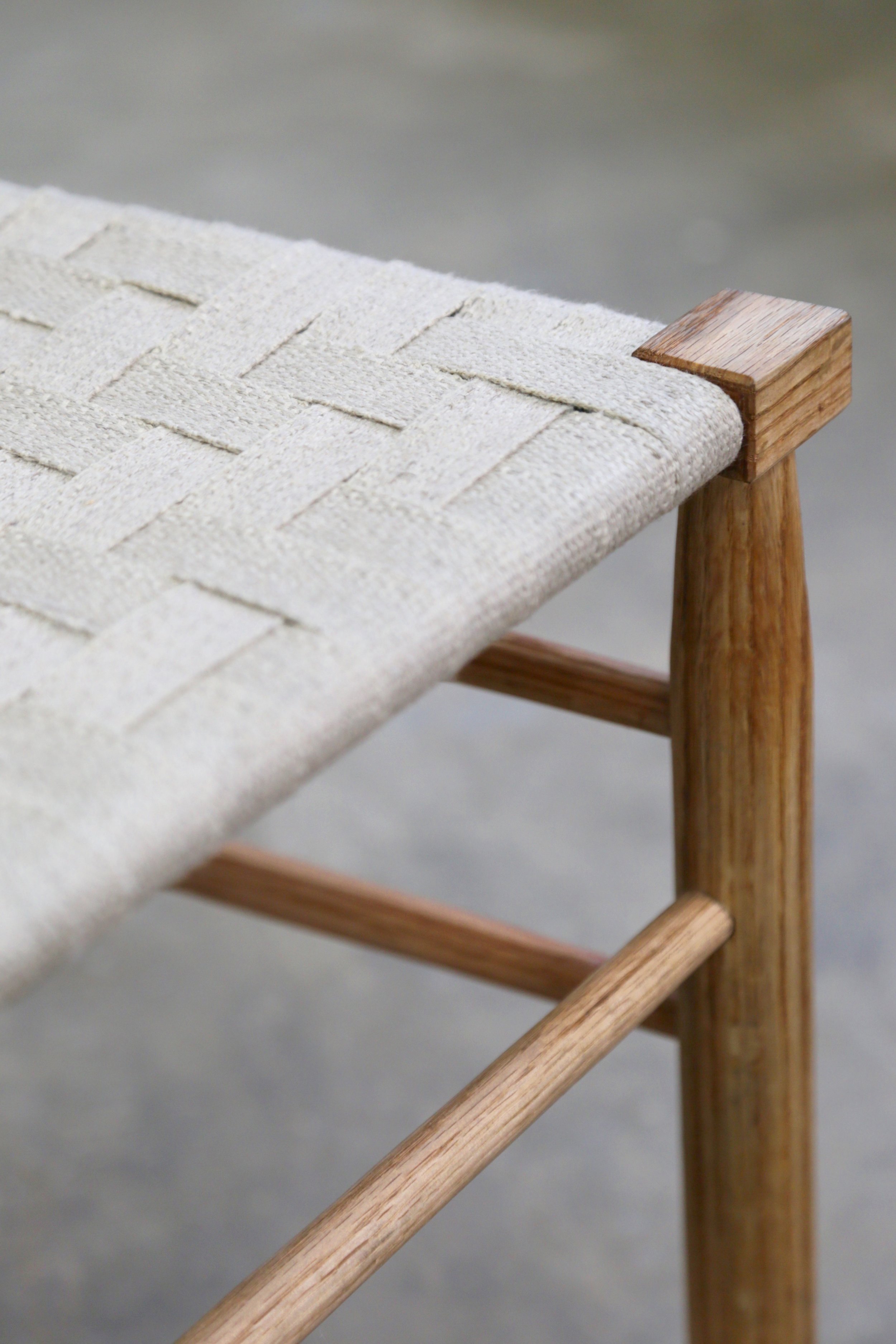


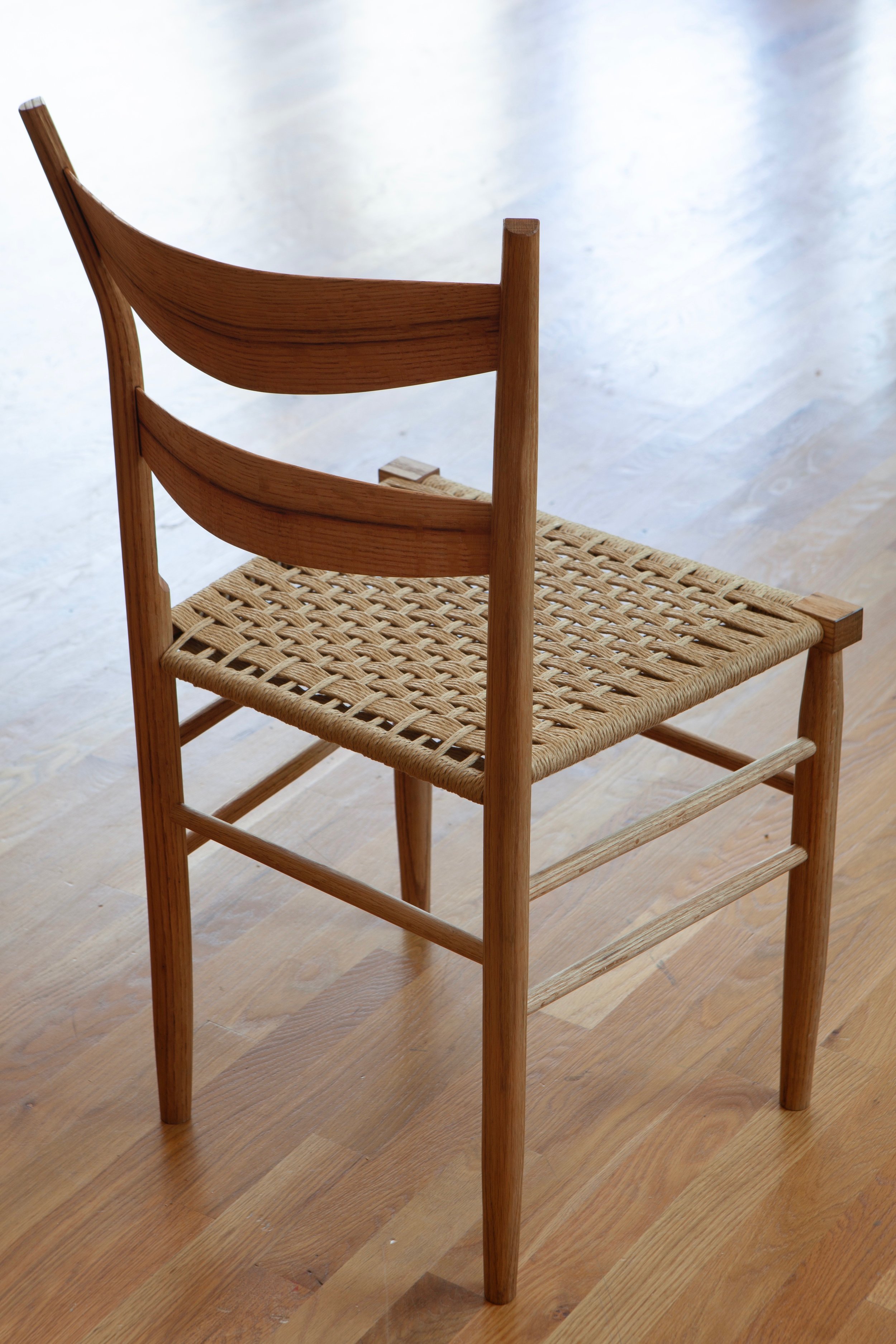
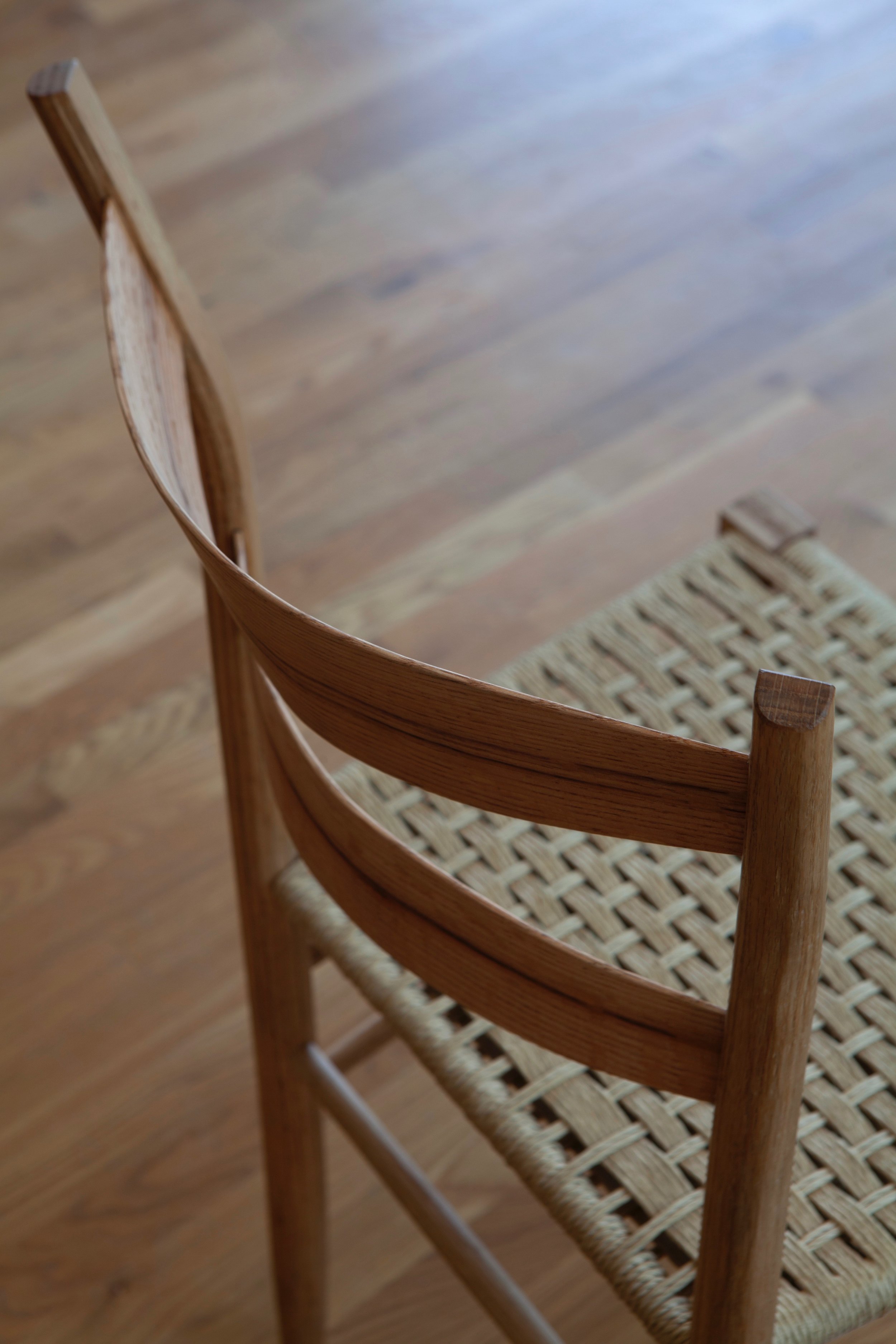


I built this first chair in the fall of 2017, under the guidance of Larry Barrett, a chairmaker in Gaithersburg, Md., who studied under Jennie Alexander.

The chair is built in the greenwood ladder-back style, with rived parts shaped on the shavehorse. Here, the chair stick and rung stick are shown – these two simple sticks contain all of the proportions used in building the chair.

The chair is made from green red oak (Quercus rubra) and assembled with varying degrees of dryness, which allows the parts to swell and interlock in a permanent bond.

The Alexander-style chair is supremely comfortable – this is due to the years of prototyping and investigation Alexander spent try different post bends, slat designs and seating angles.

The seat is woven with hemp tape, which is a strong and comfortable material. The pattern is a stepped diagonal pattern, with two false warp strands woven into each side to accommodate the trapezoidal seat. There is also a small cusion in between the top and bottom layers, which prevents the tape from sagging.

Barrett’s design differs from Alexanders most at the front post. Barrett chose to use the small blocks atop the front posts, which level the leg to the seat and prevent the post from hitting the underside of the leg.

This second chair was built in July of 2018. It very closely resembles the first Barrett chair I built, save for the seat weaving, which was done in Danish paper cord.

The back posts flare outward about 1/4” more than the first chair, as well – this was an experiment in comfort, trying to suss out small changes that may impact how the chair sits.

The Danish cord seat was woven in one sitting using a full weave, with no nails – the underside and top are woven identically around the top rungs.

The cord complements the delicate, thin and yet strong and sturdy feel echoed in each element of the chair. While a good deal more work, the look and durability both make this material a nice choice.

The slats in this second chair have a bit more color and character as well – with this being the only large “show” surface of the chair, it’s nice to feature some of the beauty of this red oak.
